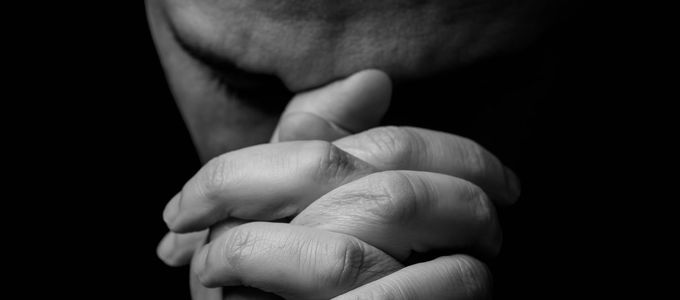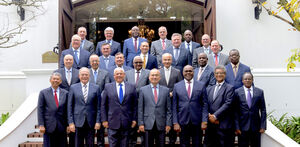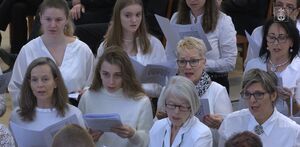God gives, humans receive – The art of praying
To pray it takes more than a sense of tradition or presenting and positioning oneself. But what exactly does it take to have an active prayer life? Important are the right atmosphere, a good attitude, and the proper inner disposition. Part two of a reflection on prayer.

If someone is praying can usually be seen from a distance already: either they have their hands folded or have their eyes closed or are standing devoutly with their heads bowed. A serious conversation is usually paired with a certain posture. Folding one’s hands signifies concentration: the supplicant is concentrating on his dialogue with God and has ceased all activity. People who kneel while they pray show that they are humbling themselves before God, and that they venerate Him as the almighty, exalted, and merciful God. People who close their eyes when they pray do not want to be distracted. Those who bow their heads are submitting to the omnipotence of God.
The outward posture
Already a supplicant’s outward posture makes clear that he is completely focused on God. A prayer occurs on the basis of a direct need to turn to God, to give thanks to Him for gifts received, and to ask Him for help or support. In prayer, human beings are therefore always the recipients, even when they are wrestling with God, as Jesus did in the most terrible moment of His life: “And being in agony, He prayed more earnestly. Then His sweat became like great drops of blood falling down to the ground” (Luke 22: 44). The person praying is therefore the supplicant, and God the giver and benefactor. Ultimately, prayer is a matter of grace and salvation—something human beings need, and which God in turn bestows upon us.
Professing and recognising God
When we pray, God is our sole partner in dialogue. This also applies to collective prayer and the prayers in divine service. It is not the assembled participants who are being addressed, but God. In this way prayer is neither a monologue nor a speech to those assembled in prayer. Those who commend themselves to God in prayer will experience that God is a loving Father and provider, who grants strength and support in the most diverse conditions of life.
When we profess God the Father as the Creator, Jesus Christ as the Redeemer, and the Holy Spirit as the Maker of the new creation, we can experience that this is the case in prayer. For one thing, our profession will become part of our life and, on the other hand, our worship and adoration, thanksgiving, petitions, and intercessions—all of which are part of prayer—will grant us insight into the nature of God. It is for this reason that prayer is also an important source of direct knowledge of God. Whoever professes God recognises Him.
Knowledge is good
What else should we know about prayer? Anything that moves and stirs within a human being’s heart—including our own needs and wishes, as well as the needs and wishes of others—is part of prayer. Prayer incorporates fears and joys, health and sickness, life on the threshold of death, the magnificence of nature, and the beauty of humanity in fellowship and being there for one another, but also that which is unfathomable, such as the destruction that man inflicts on nature and other human beings. All this is found in prayer.
And the following promise is still valid: “And whatever things you ask in prayer, believing, you will receive” (Matthew 21: 22).
Part 3 will follow …
Photo: StockPhotosArt.com / fotolia.de
Article info
Author:
Date:
Keywords:
Peter Johanning
12.02.2018
Doctrinal statements,
Congregational life





